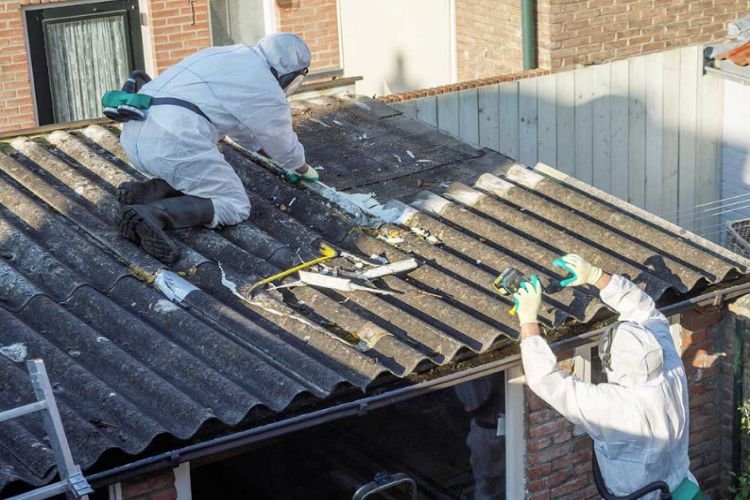 It’s a hidden danger lurking in the walls and ceilings of our homes and businesses: asbestos. This toxic material, once commonly used in construction, is now known to cause serious health problems, including lung cancer and mesothelioma.
It’s a hidden danger lurking in the walls and ceilings of our homes and businesses: asbestos. This toxic material, once commonly used in construction, is now known to cause serious health problems, including lung cancer and mesothelioma.
But how do you know if your property contains asbestos, and what can you do to remove it safely? In this article, we’ll explore the issue of asbestos and provide guidance on how to identify and remove it from your commercial or residential property.
Understanding Asbestos
Asbestos is a naturally occurring mineral that was once used in a variety of construction materials, including insulation, flooring, and roofing. Asbestos fibers can be emitted into the air while these materials are broken or disturbed, where they can be inhaled and cause serious health problems.
Identifying Asbestos in Your Property
The mere thought of asbestos lurking in your business or home can be frightening, but identifying its presence is the first step to ensuring your safety. Asbestos can be found in various materials and places within your property, including those you might not expect.
Asbestos-containing materials (ACMs) were widely used in construction until the 1970s, so if your property was built before then, there’s a chance that it contains asbestos. Some common materials that may contain asbestos include insulation, roofing and siding materials, floor tiles, and adhesives. Asbestos is also found in popcorn ceilings, textured paints, and HVAC ducts.
Identifying asbestos in your property is not something you should do on your own. Asbestos assessment is necessary to ensure that the materials in question contain asbestos. Asbestos fibers are microscopic, and they cannot be detected by sight alone. A professional asbestos inspector will take samples of the materials suspected of containing asbestos and send them to a laboratory for analysis.
If you plan to renovate or do construction work in a building that was built before the 1980s, it’s essential to have it inspected for asbestos before beginning any work. Disturbing ACMs can release asbestos fibers into the air, which can pose a significant health risk to anyone nearby.
The Dangers of Asbestos Exposure
Asbestos exposure is no laughing matter. It can have dire consequences on your health, and the risks are not to be taken lightly. Even a small amount of asbestos exposure can put you at risk of developing serious illnesses.
The most significant health risk associated with asbestos exposure is mesothelioma, a rare and aggressive form of cancer that affects the lining of the lungs, heart, or abdomen. This cancer is almost exclusively caused by asbestos exposure, and it can take anywhere from 20 to 50 years to develop after the initial exposure.
Asbestosis is another serious health condition that results from prolonged exposure to asbestos fibers. It’s a chronic lung disease that causes scarring and damage to the lung tissue, leading to shortness of breath, coughing, and chest pain.
In addition to mesothelioma and asbestosis, asbestos exposure can also cause lung cancer, especially in individuals who smoke. According to the World Health Organization (WHO), exposure to asbestos is responsible for over 100,000 deaths each year globally.
It’s crucial to understand that asbestos-related diseases are not treatable or curable. Treatment options focus on managing symptoms and improving the patient’s quality of life. The best way to avoid health risks associated with asbestos exposure is to prevent exposure in the first place.
The Importance of Safe Asbestos Removal
Removing asbestos from your property is a serious matter that should only be handled by licensed professionals. It’s not a DIY project, and attempting to remove asbestos-containing materials yourself can put your health and the health of those around you at risk.
The first step in safe asbestos removal is to have your property inspected by a licensed professional to identify any asbestos-containing materials. If asbestos is found, the next step is to create a plan for safe removal that complies with all federal and state regulations.
During the removal process, the asbestos-containing materials must be wetted down to prevent the release of asbestos fibers into the air. The area must be sealed off from the rest of the property to prevent contamination. Protective equipment, including respirators and disposable coveralls, must be worn by those handling the removal.
Once the asbestos-containing materials have been removed, they must be disposed of in accordance with state and federal regulations. It’s crucial to choose a licensed and reputable asbestos removal company to handle the entire process from start to finish.
Know more about artex removal.
Remember, the health risks associated with asbestos exposure are not to be taken lightly. Safe and proper asbestos removal is crucial to protect your health and the health of those around you. Don’t take chances with your well-being – choose a licensed professional for safe and effective asbestos removal.
Legal and Financial Considerations
Asbestos is a costly problem to deal with, not only in terms of your health but also in legal and financial implications. If asbestos is found in your property, you may be facing a complex and expensive legal battle, especially if you are a property owner or landlord.
Lawsuits related to asbestos exposure can result in significant financial damages, including compensation for medical bills, lost wages, and pain and suffering. If you’re a landlord, you may also be liable for damages resulting from the exposure of tenants or their guests to asbestos.
It’s crucial to understand your legal responsibilities as a property owner or landlord when it comes to asbestos. Failure to comply with federal and state regulations related to asbestos removal can result in significant legal consequences, including fines and even criminal charges.
In addition to the legal and financial implications of asbestos, it’s also important to consider the long-term financial impact on the value of your property. Asbestos-containing materials can significantly reduce the value of your property and make it more difficult to sell or rent.
It’s crucial to address any asbestos-related issues as soon as possible to minimize the financial and legal implications. Don’t wait until it’s too late – work with a licensed professional asbestos removal company to ensure that your property is safe, compliant, and valuable.
Conclusion
Asbestos is a serious health risk that should not be taken lightly. By understanding the dangers of asbestos, identifying it in your property, and taking the necessary steps to remove and prevent it, you can help protect yourself, your family, and others from the harmful effects of this toxic material.




